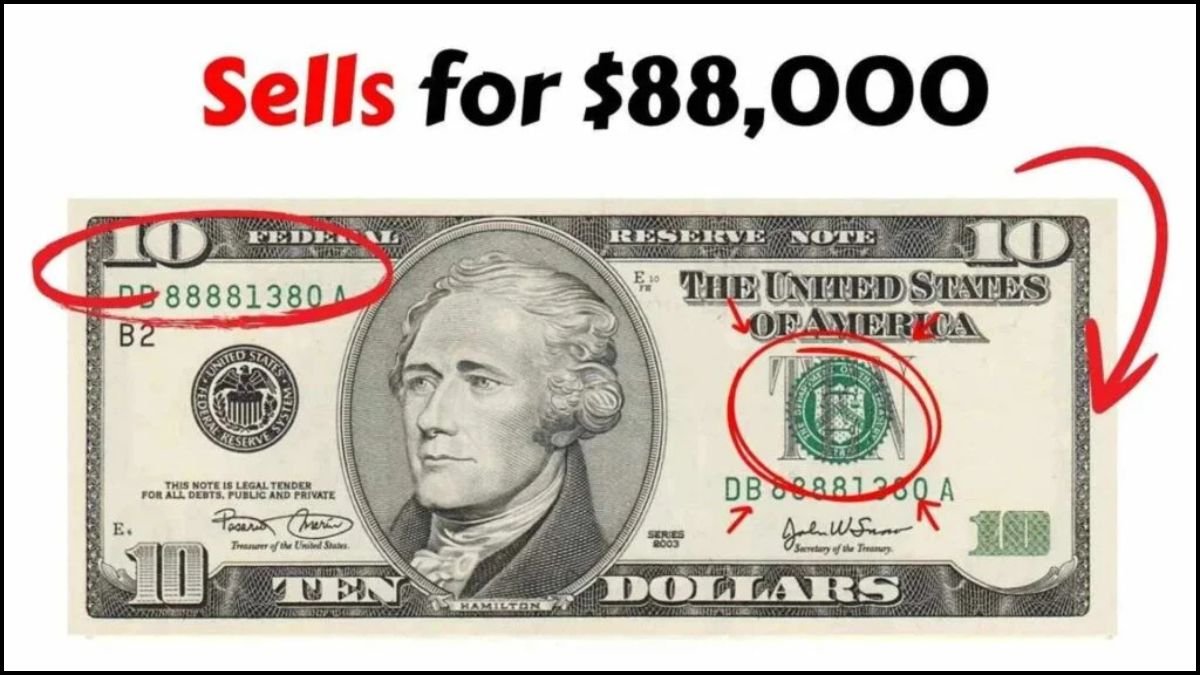Imagine pulling a crumpled $10 bill out of your wallet, thinking it’s nothing special, and later finding out it’s worth more than a luxury car. Sounds unbelievable, right? Well, that’s exactly what happened when a rare $10 bill printed with $1 design features was auctioned off for a staggering $88,000. At first glance, it looks like ordinary money. But one tiny mistake during printing turned this everyday note into a collector’s jackpot.
How Did This Error Happen?
Back in 2014, at the Bureau of Engraving and Printing in Fort Worth, Texas, a strange mix-up took place. A batch of $10 notes was supposed to receive the correct overprint its serial number and Treasury seal. But instead, the batch accidentally got stamped with the overprint meant for $1 bills.
The result? A $10 bill that carries the features of a $1. Most slipped into circulation without anyone noticing. Years later, sharp-eyed collectors started spotting them, and since then their value has skyrocketed.
Printing Errors That Became Famous
These $10/$1 mix-ups aren’t the only printing mistakes collectors dream of. A few other legendary error notes include:
| Bill Type | Error Type | Auction Value Range |
|---|---|---|
| $10 Bill | $1 Overprint Error | $50,000 – $88,000 |
| $20 Bill | Del Monte Banana Sticker | $25,000 – $35,000 |
| $5 Bill | Inverted Seal (1995) | $1,000 – $3,000 |
| $1 Bill | Double Printing Misalignment | $500 – $1,500 |
Each of these is proof that sometimes mistakes can be worth a fortune.
Why Collectors Pay So Much
In the world of currency collecting, it all comes down to rarity. A regular $10 bill will always be worth $10. But when only a tiny number of error notes exist, collectors compete fiercely to get their hands on one. That competition drives the prices into jaw-dropping territory.
One lucky owner who found and sold his error $10 walked away with $88,000. Imagine buying coffee with that same bill—it would’ve been the most expensive latte ever.
How to Check If You Have One
Before you rush to spend your next $10, take a closer look. Here’s what to check:
- Seal and Serial Number – If they look like they belong on a $1 bill instead of a $10, that’s your first clue.
- Side-by-Side Test – Compare with a normal $10 bill. Errors usually stand out quickly.
- Condition Matters – A crisp, uncirculated note could fetch $50,000–$88,000, while circulated ones might still bring $10,000–$30,000.
Shocking Facts You Should Know
- Experts believe fewer than 100 of these error notes exist.
- Many are still out there, hiding in wallets, bank drawers, or old collections.
- Every year, auction houses report growing demand for modern error bills. Prices keep climbing.
What To Do If You Find One
If you’re lucky enough to spot a potential error bill, don’t just shove it back into your pocket. Handle it carefully, store it in a protective sleeve, and consider getting it graded by PMG or PCGS, the top certification services. And when it comes time to sell, major auction houses like Heritage or Stack’s Bowers can connect you with serious collectors.
Conclusion
The story of the $10 bill with a $1 print error proves that sometimes ordinary money can be worth extraordinary amounts. With fewer than 100 known to exist, these notes have become modern treasures. While most of us will only ever use a $10 bill to grab lunch, a lucky few could discover they’re holding a piece of currency history worth tens of thousands.
So the next time you break a $20 and get change back, take a second look. Who knows? That ten-dollar bill could secretly be worth more than your car.
Disclaimer
This article is only for educational and general information purposes. Currency values depend on rarity, condition, and collector demand. Always confirm authenticity with certified grading services and check official sources before buying or selling collectible currency.
